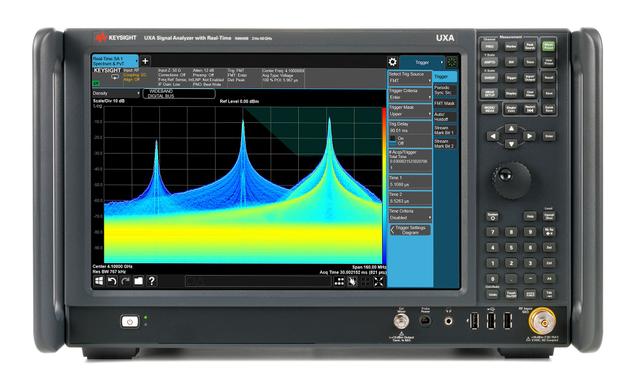SMARTER SOLUTIONS FOR TELECOM TESTING
Enabling the Future of Telecommunications
Tools to Design, Test and Deploy the Latest Telecom Technology
We offer a wide range of wireless and wireline test equipment from cellular wireless, fiber optic installation to drive test, 5G R&D and Ethernet. Our experts can help find tailored solutions to access the latest test technology and make best use of your budget.
Product Recommendations
Showing 1 - 3 of 3 results
Showing 1 - 5 of 5 results
Showing 1 - 4 of 4 results
Showing 1 - 7 of 7 results
Showing 1 - 2 of 2 results
Distributed Antenna Systems (DAS)
To meet the rapidly increasing need for bandwidth in high-density public spaces such as airports, public buildings, malls, stadiums and entertainment venues, DAS architectures offer an ideal solution. However, given the wide variety of configurations possible, thorough testing is critical to ensure a positive user experience. Performance issues can arise from RF interference, sub-optimal antenna positioning, incorrect cable installation, as well as several other sources, so using the right tools are essential for success.
Drive Test
Carriers need to perform live testing of mobile networks to ensure network coverage and Quality of Experience (QoE) for customers. Known as Drive Testing, test User Equipment (UE) is used for active measurement of traffic channel beams, Quality of Service (QoS), QoE, mobility and interoperability. Common measurements for LTE and previous generations include signal strength, transmission power and uplink and downlink throughput. For 5G, beamforming introduces a new test methodology using scanning receivers for Synchronization Signal Block (SSB) reference beam coverage measurements.
EMF Intensity Monitoring
Governmental agencies and international bodies have set limits on human exposure to RF energy to ensure the safety of anyone working near wireless antennas. Antenna manufacturers need to verify the strength of electromagnetic fields (EMF) from antennas using spectrum analyzers during pre-deployment. Once deployed, carriers run frequency-selective or code-selective EMF measurements using portable equipment to verify that the site’s EMF emissions meet the regulatory requirements.
Passive Intermodulation (PIM) Testing
As the performance of existing networks is pushed to the limit, and new generations of wireless introduce new bands, Passive Intermodulation (PIM) is a growing challenge. PIM occurs when RF signals meet at non-linear junctions, usually caused by contaminated contacts, loose or poorly prepared connections, or nearby metallic or magnetic objects. It leads to poor connectivity, dropped calls and low data rates which damage all user experience, so it’s essential to locate and remove these sources.
Distributed Antenna Systems (DAS)
To meet the rapidly increasing need for bandwidth in high-density public spaces such as airports, public buildings, malls, stadiums and entertainment venues, DAS architectures offer an ideal solution. However, given the wide variety of configurations possible, thorough testing is critical to ensure a positive user experience. Performance issues can arise from RF interference, sub-optimal antenna positioning, incorrect cable installation, as well as several other sources, so using the right tools are essential for success.
Drive Test
Carriers need to perform live testing of mobile networks to ensure network coverage and Quality of Experience (QoE) for customers. Known as Drive Testing, test User Equipment (UE) is used for active measurement of traffic channel beams, Quality of Service (QoS), QoE, mobility and interoperability. Common measurements for LTE and previous generations include signal strength, transmission power and uplink and downlink throughput. For 5G, beamforming introduces a new test methodology using scanning receivers for Synchronization Signal Block (SSB) reference beam coverage measurements.
EMF Intensity Monitoring
Governmental agencies and international bodies have set limits on human exposure to RF energy to ensure the safety of anyone working near wireless antennas. Antenna manufacturers need to verify the strength of electromagnetic fields (EMF) from antennas using spectrum analyzers during pre-deployment. Once deployed, carriers run frequency-selective or code-selective EMF measurements using portable equipment to verify that the site’s EMF emissions meet the regulatory requirements.
Passive Intermodulation (PIM) Testing
As the performance of existing networks is pushed to the limit, and new generations of wireless introduce new bands, Passive Intermodulation (PIM) is a growing challenge. PIM occurs when RF signals meet at non-linear junctions, usually caused by contaminated contacts, loose or poorly prepared connections, or nearby metallic or magnetic objects. It leads to poor connectivity, dropped calls and low data rates which damage all user experience, so it’s essential to locate and remove these sources.
Distributed Antenna Systems (DAS)
To meet the rapidly increasing need for bandwidth in high-density public spaces such as airports, public buildings, malls, stadiums and entertainment venues, DAS architectures offer an ideal solution. However, given the wide variety of configurations possible, thorough testing is critical to ensure a positive user experience. Performance issues can arise from RF interference, sub-optimal antenna positioning, incorrect cable installation, as well as several other sources, so using the right tools are essential for success.
Resources























